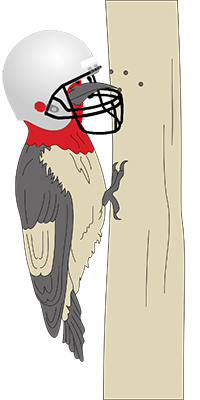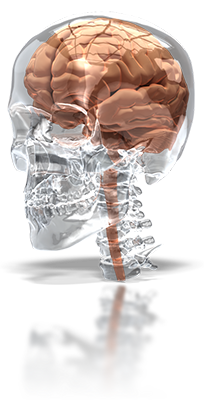 One of the most common and easily made mistakes in the engineering world is that of jumping to solution. It is quite easy to frame any given problem in terms of a solution or class of solutions. But the cost of this mistake is errantly removing from consideration all possible solutions outside that space.
One of the most common and easily made mistakes in the engineering world is that of jumping to solution. It is quite easy to frame any given problem in terms of a solution or class of solutions. But the cost of this mistake is errantly removing from consideration all possible solutions outside that space.
Take, for example, the problem of head injuries in contact sports. Dramatized in the movie Concussion, our understanding of the problem has extended from the acute consequences of a single injury to the recognition that, over time, repeated injuries can result in long-term neurological deficits. Called Chronic Traumatic Encephalopathy (CTE), the progressive degenerative brain disease results from a succession of blows to the head.
The recognition of CTE in aging athletes has triggered an increased public interest in CTE which has been accompanied by a corresponding increase in research around protecting the brain from such repeated trauma. But in the quest to solve this problem, the public and many researchers have fallen victim to the mistake of jumping to solution.
There have been efforts to reduce the frequency of impact (including reducing practice time and instituting no-contact drills) and eliminating high risk behaviors through rule changes. However, the quest to prevent CTE has largely become a quest for a better helmet. The helmet has been the method of choice in protecting the athlete’s head. The idea is to protect the brain from trauma by absorbing the force of the blows in the helmet. It is a natural logical progression to think that better protection is likely to come from better helmets. And in fact, much research and development is channeled in this direction.
That mindset represents the classic instance of “jump to solution” thinking. The problem is framed in the paradigm of protecting the head from blows using an external device to absorb the shock. This paradigm bypasses the problem-solving step that could understand the problem as protecting the brain from injury instead of assuming that it is protecting the head from shock. That can, and does, narrow the solution set to “better helmets.”
 But not all researchers are making that mistake. Rather than being trapped in the paradigm of providing protection from outside the skull, they have instead focused on the cause of repeated trauma to the brain. The brain is suspended in the skull in a volume of cerebrospinal fluid. There is a substantial body of research that suggests that trauma to the brain occurs when the brain “sloshes” in the cerebrospinal fluid against the skull, producing injuries from the impact of brain on the skull.
But not all researchers are making that mistake. Rather than being trapped in the paradigm of providing protection from outside the skull, they have instead focused on the cause of repeated trauma to the brain. The brain is suspended in the skull in a volume of cerebrospinal fluid. There is a substantial body of research that suggests that trauma to the brain occurs when the brain “sloshes” in the cerebrospinal fluid against the skull, producing injuries from the impact of brain on the skull.
In looking at animals that sustain repeated impacts to their heads – like insect-drilling woodpeckers and combative, head-butting bighorn sheep – the researchers asked how these animals protect their brains without the benefit of externally mounted shock absorbing helmets.
The answer seems to come from increased blood volumes and pressures inside the animal brains. This swells the brain to fill the cranium and decreases the incidence and severity of collisions between brain and skull by decreasing the range and freedom of movement of the brain in the cranium. There is confirming research from studies of high school athletes playing contact sports at higher altitudes (where the brain naturally increases in volume leaving less room for collisions) who experience lower rates of the scarring which is thought to be evidence of successive brain collision injuries.
This information has led researchers like Dr. Julian Bailes, the former Pittsburgh Steelers physician played by Alec Baldwin in Concussion, to explore ways to temporarily increase the brain volume of athletes thus protecting them against “sloshing.” The ability to explore this broader solution set is a direct result of sound system engineering practice that leads to defining the problem and requirements (reducing the brain contacts with the skull versus reducing the number and force of the shocks to the head) without framing them in terms of a particular solution (helmets).
Bailes himself is a co-developer of a U-shaped collar worn around the back and sides of the neck applying gentle pressure to the jugular veins that empty blood from the brain back into the circulatory system. This mild restriction in the draining flow without a corresponding increase in the arterial supply flow causes the blood volume (and corresponding brain volume) to increase in the cerebrospinal fluid, decreasing the motion of the brain and reducing or eliminating the trauma.
The research around this solution is far from over. Its benefits must be confirmed. The other potential consequences of limiting return blood flow need investigation. In the meantime this work provides an excellent illustration of the benefits of escaping a solution-based paradigm. Rather than becoming trapped in the “better helmet” framing of the solution space, Bailes and his colleagues were open to considering a solution from inside the skull – a solution that holds promise for the potential victims of CTE. They recognize that the real issue is the number and force of impacts to the brain from collisions with the skull. Reducing the impacts to the head using helmets is, of course, helpful. Limiting the solution space to that approach by jumping to solution is not.






